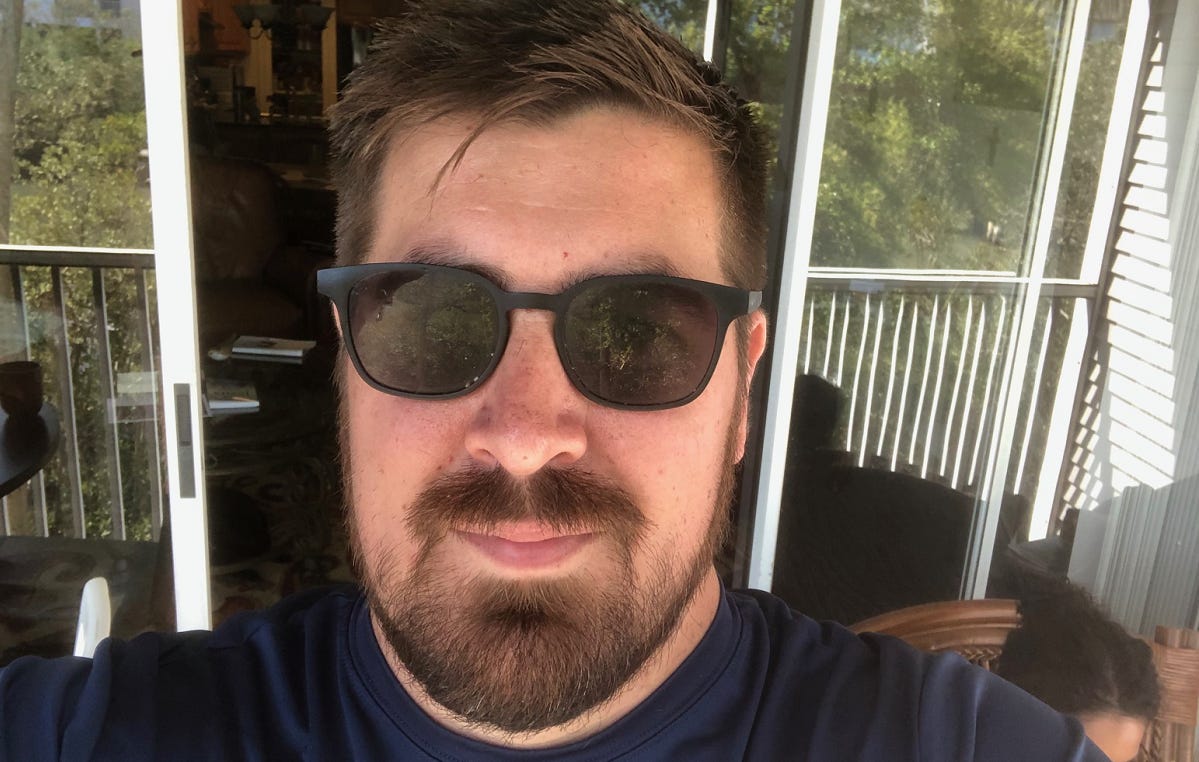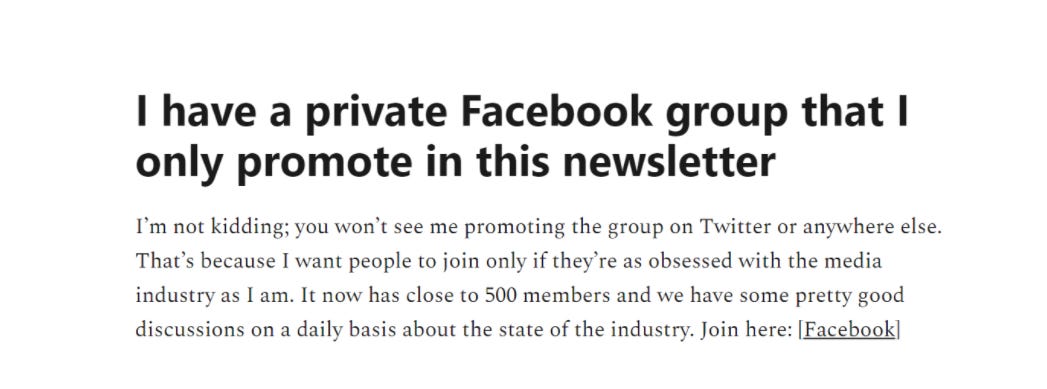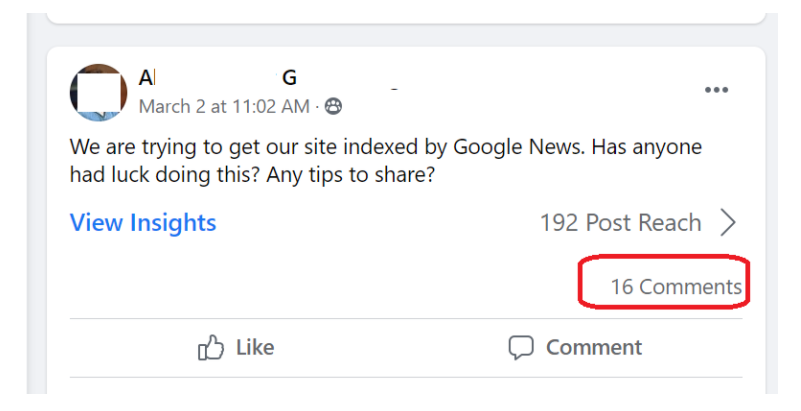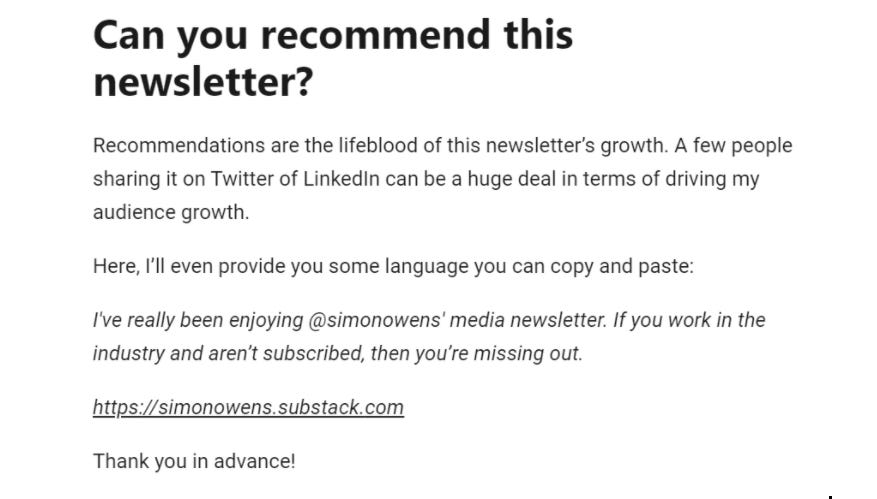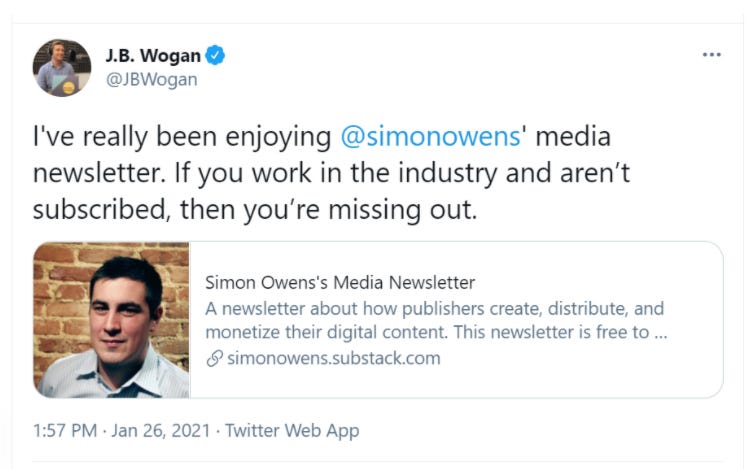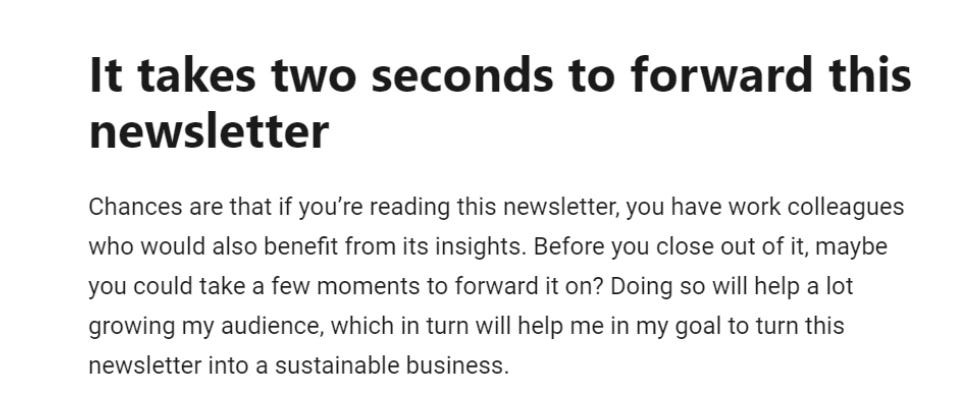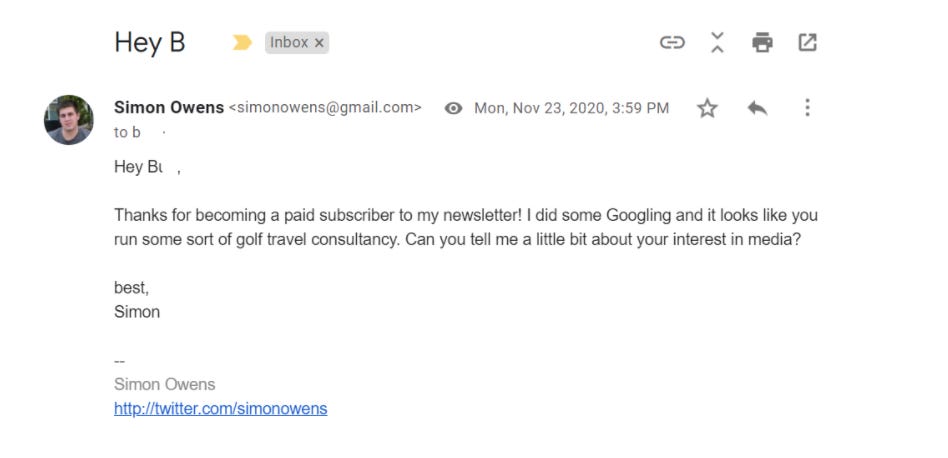5 lessons from running a paid newsletter for the past year
Don't be afraid to ask your audience for help.
Welcome! I'm Simon Owens and this is my media newsletter. You can subscribe by clicking on this handy little button:
In retrospect, I don’t think I had much of a strategy in place when I launched the paid version of my newsletter about a year ago. Sure, I’ve been studying newsletter subscription strategies for years, so I didn’t go into the project completely blind, but I also didn’t sit down to form a business plan that gamed out all the various aspects of content creation, promotion, and monetization that a paid newsletter requires. Instead, my entrance into the paid newsletter space was largely impulsive and driven by my unhappiness at my current situation.
Let me back up a bit: up until 2014, I’d drifted back and forth between the journalism and marketing worlds. I spent the first few years of my career as a print newspaper reporter, and then in 2008 I was recruited to work at a DC digital marketing agency. In 2012, I took a job as an assistant managing editor at a major national magazine. Two years later, I accepted a director role at another marketing/PR agency.
By 2014, I felt I had learned enough to run my own content marketing consultancy, so I quit my job and went for it. My approach in those first six months was simple: I spent every available moment creating content for my own blog, newsletter, and social media accounts. My thesis was that potential clients would consume my content, get value from it, and then reach out to hire me to create content for them.
The strategy worked. Within a year, I’d built up a roster of retainer clients that were collectively paying me a six-figure income. Whenever client work would enter a lull, I’d pour all my free time into creating new content, which would then result in more client work. For a while, it was the perfect cycle, and I was immensely proud of the business I had built for myself.
But then the frustrations crept in. For one, my business wasn’t very scalable. Sure, I could charge a bit more, but unless I was willing to build a team below me -- something that didn’t really interest me -- then I was fairly limited in terms of growth. There are really only so many hours you can work in a week and so much a client is willing to pay to a single freelancer.
But the biggest frustration lay with the work itself. I truly loved creating my own content and then watching it get shared by others. I got a huge high whenever my newsletter signups spiked. But the more successful I was at spreading my own content, the more client leads it generated, which meant I had less time to spend on my own content. I began to resent my own clients for pulling me away from the work I actually enjoyed.
Sure, I toyed with the idea of launching a paid newsletter, but I knew from my own research that you needed a rather large base of free subscribers if you wanted to convert enough of them into customers. By my calculations, I would need at least 10,000 free signups before a paid newsletter would become viable.
The problem was that I was still a good deal away from hitting that number, so I continued carving out time on my nights and weekends to work on my own content, with the idea that I’d eventually reach enough scale to quit my client work and focus solely on my own journalism.
So why did I launch my paid newsletter in early 2020? It wasn’t because I’d hit those 10,000 free signups. Rather, I finally acknowledged to myself that it would take years of toiling away on nights and weekends before my audience would reach a sufficient size. At the time, I was 35 year old, and I didn’t want to wait until I was in my 40s before I finally made a go at the career I actually wanted.
So with very little planning, I announced the debut of my paid newsletter. Luckily, it happened to coincide with a pandemic-induced slowdown of my freelance client work. By the time clients started reaching out to me again a few months later, I had built up some solid momentum, and I knew I never wanted to go back to what I now considered my previous career.
Did this mean I quit freelance consulting entirely? Not exactly. But I became much more circumspect in what client work I took on and reoriented my offerings so they centered on content strategy. I was no longer available for the kind of content creation that would eat up hours of my work week. For that kind of work, clients would need to look elsewhere.
Recently, I passed my year anniversary of launching the paid edition of my newsletter, and looking back, I have a lot to be proud of. In that time, I published over 100 longform articles and produced 44 new podcast episodes. My free email list grew by about 100% and podcast downloads increased 75% YoY. Across all the various platforms I operate, my content drove 7.4 million impressions, views, downloads, and streams. When you zoom in on just the longform content (podcasts, newsletters, articles), it received over 290,000 downloads/streams/views.
What about actual revenue? Well, the newsletter itself is now a solid five-figure business. It’s not yet replaced my full-time income from a year ago, but it could conceivably hit those benchmarks by this point next year.
So how did I go from having virtually no strategy in place to reliably converting new subscribers? I’ve actually learned a lot of lessons in the last year -- lessons that have changed the way I create, promote, and monetize my content. And since this is a newsletter about digital publishing, I thought I would try to round up a bunch of these lessons and present them to you for your own use.
So here are the five lessons I learned while running a paid newsletter:
Constantly experiment with formatting
By the time I launched my paid newsletter, I had been publishing my free newsletter for about five years. You would think that, by that point, I would have a good sense of what my audience wanted from me.
But I had never sent out multiple newsletters a week before, so I never had a great sample size through which to observe how readers consumed my content. A more consistent output allowed me to test out different theories for what would cause people to open and share my articles.
One of the things I specialize in is writing deeply-researched, longform articles that are packed with insights, and it used to be that I simply sent these articles out to my full email list so the articles could be consumed within the inbox.
But I eventually realized that this didn’t create an ideal reading experience. A reader might open the email, decide they weren’t interested in the topic of that particular article, and then close out of the email without reading it. If this happened enough times, then maybe the subscriber either stopped opening the emails or unsubscribed.
Also, I knew from personal experience that I didn’t really like reading huge blocks of text in the inbox. Even with the longform newsletters I subscribe to, I often open them in the browser (most email clients allow this) and then save them to Instapaper for later.
So starting in November, I switched up my strategy. I continued publishing my longform articles, but I didn’t send it out to the email list. Instead, the newsletter that landed in subscribers’ inboxes curated my recent articles but also included industry news from outside sources. That way, a reader who opened the email was much more likely to find something that interested them.
As I mentioned, I debuted this new format at the beginning of November, and that ended up being my highest growth month since the launch of the paid newsletter, so I stuck with it.
Build a community for your audience
If you run a niche content operation, it’s likely that members of your audience are highly knowledgeable in your niche. The best way to unlock that knowledge is to form a community around them.
I did this using Facebook Groups. Reservations with Facebook aside, it’s the best place to grow a community within someone’s already-existing media diet. People already open Facebook multiple times a day, so it’s easier to grow a community there rather than asking them to incorporate a separate website into their browsing habits.
To build the community, I first created a private Facebook group with the highly specific name “Subscribers of Simon Owens.” The reason for this is that I didn’t want random people who were performing generic searches to come across it.
I then began running promotions for it deep within my newsletter. I didn’t want casual subscribers to join; instead, I was looking to attract the people who actually read my newsletter from start to finish. Here’s how I pitched it to subscribers:
The language changes every week, but the messaging is basically the same: “join this super exclusive club that’s populated by people just like you.”
The strategy worked. I now have close to 500 members in the group, and the engagement is much higher than what I see on virtually every other social platform. I’ve made sure to be super responsive to people who post in the group, and as a result we sometimes get into some pretty good discussions about matters relating to the media industry.
I actually learn stuff while browsing the group. For instance, the other week one of the members asked a question about getting her website indexed on Google News. This was a topic I knew very little about, but it received about a dozen thoughtful responses from people who knew what they were talking about:
So what benefits do I get from running this community? It’s all about additive value and brand building. People who join the Facebook group are exposed to my name and face more often, and so they’re much more likely to convert into a paid subscription at a faster timeline than they otherwise would if they’re just consuming the newsletter.
Ask your audience to share your newsletter
In my experience, there are two kinds of newsletter readers. There’s the subscriber who picks and chooses which newsletters to read based on the subject line and their time availability. They’ll open up a newsletter and quickly scan it to see if there’s anything that catches their eye.
The second kind of reader opens every single newsletter and reads it from top to bottom. These subscribers are intensely loyal and rooting for you to succeed as a creator. They also make up a pretty large portion of your subscriber base.
And yet most newsletter writers do very little to engage this readership beyond asking them to become paid subscribers. This is a mistake, I think. When a loyal reader reaches the end of your newsletter, they should be assigned a task, usually one that involves helping you grow your newsletter.
There are two ways major ways you can do this. The first involves asking the reader to recommend your newsletter on social media. Here’s example of me doing that:
You should never use the same exact language twice, otherwise your readers will just learn to gloss over it.
Over the past few years, hundreds of my subscribers have used this prompt to recommend my newsletter. A lot of them are blue checkmark influencers with very large followings:
The other thing you can ask your followers to do is forward your newsletter to their colleagues:
It’s more difficult to track the success of this CTA in Substack, but my newsletter is opened an average of 2.4 times per subscriber, an indication that quite a few of them are forwarding the emails.
Promote your evergreen content
The longer you produce your newsletter, the more content that builds up in your archives. Depending on the subject matter, you may have a huge library of evergreen articles that aren’t being properly promoted.
The average creator I follow will publish a piece of content, promote it for a few days on social media, and then move on to the next piece of content. They’re leaving a lot of audience growth on the table by not continuing to promote their older content.
Mileage will vary based on the platform, but in my experience you can share the same article on Twitter at least once a week without annoying your followers. Platforms like Facebook and LinkedIn are a little trickier; you might want to wait upwards of a month or more.
Also, when you’re writing a new article, use every attempt to link to older stuff in your archives. It really only takes a few extra seconds to Google the older article and throw in a link. Even if only 2% of your audience clicks on any particular link, that can add up to a lot of extra engagement, and extra engagement increases the likelihood that someone will convert into a paying subscriber.
Send personal emails to new paying subscribers
Now I know what you’re thinking: “That doesn’t sound like it scales very well.”
Sure, if you’re The New York Times and you’re adding 300,000+ new paying subscribers per month, then writing a personal email to every new subscriber isn’t feasible. But for your average newsletter writer, this is easily doable and takes less time than you think.
Whenever I get a new paying subscriber, I quickly Google their name and within seconds I’m on their LinkedIn profile, which will give me a quick snapshot of who they are and what they do. Sometimes, they sign up with their work email address, which makes my job even easier.
I then shoot them a quick email that uses their name in the subject line. I mention their job and then ask them what they’re looking to get out of my newsletter. Here’s an example:
All together, this takes only a few minutes.
A lot of my subscribers are surprised to receive a personal note from me and even say so:
So why do I do this? For one, it drastically reduces churn. If someone responds to my personal email, they almost never unsubscribe (or at least they haven’t yet in the entire year I’ve been doing this).
Second, I’m often astonished by what I learn about my subscribers; I’ve stumbled upon some incredibly successful media entrepreneurs this way, and it’s fairly common that I end up featuring them in my newsletter or interviewing them for my podcast. I would estimate that at least 30 interviews have resulted from these email exchanges.
Are you still reading this article?
You’re now 2,500 words deep into a 2,600 word article. That means you’re probably pretty invested in the subject matter I cover here. Perhaps this is the perfect time to become a paid subscriber? Doing so not only supports the work I do here, but it’ll get you access to a growing archive of subscriber-only case studies. I interview successful media entrepreneurs and executives and then publish actionable insights from those interviews -- insights like the very ones you’re reading in this article. If you work in the business of digital content, subscribing to my newsletter will make you better at your job.
And since it’s my one year anniversary, I’m going to run a special discount that gives you 20% off for the first year. That’s double my typical discount. Click on the link below to take advantage of it:
For those who already subscribe, thanks for sticking with me all this time. I can honestly say that the last year has been the most fulfilling of my entire career, and I look forward to producing my newsletter long into the future.



